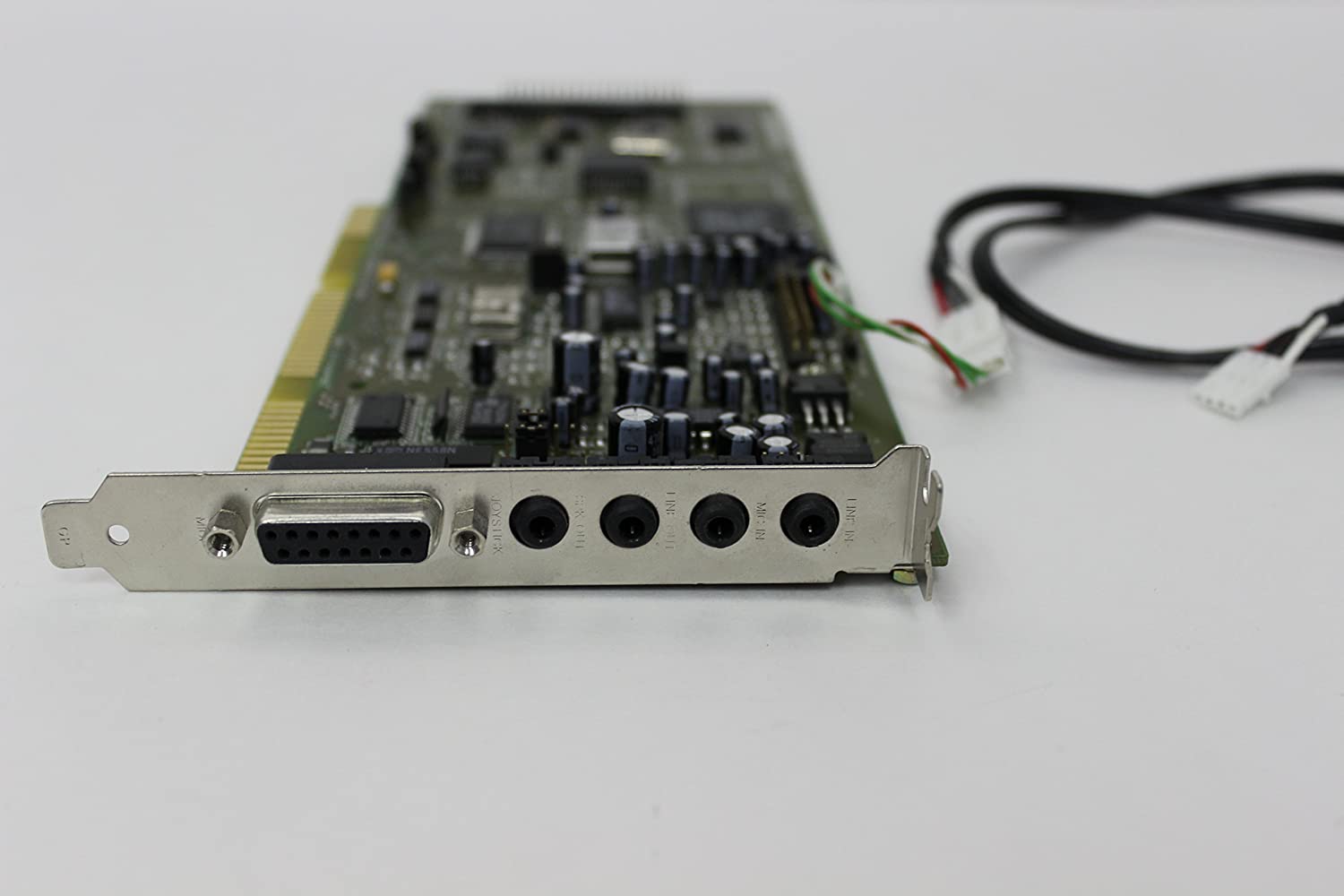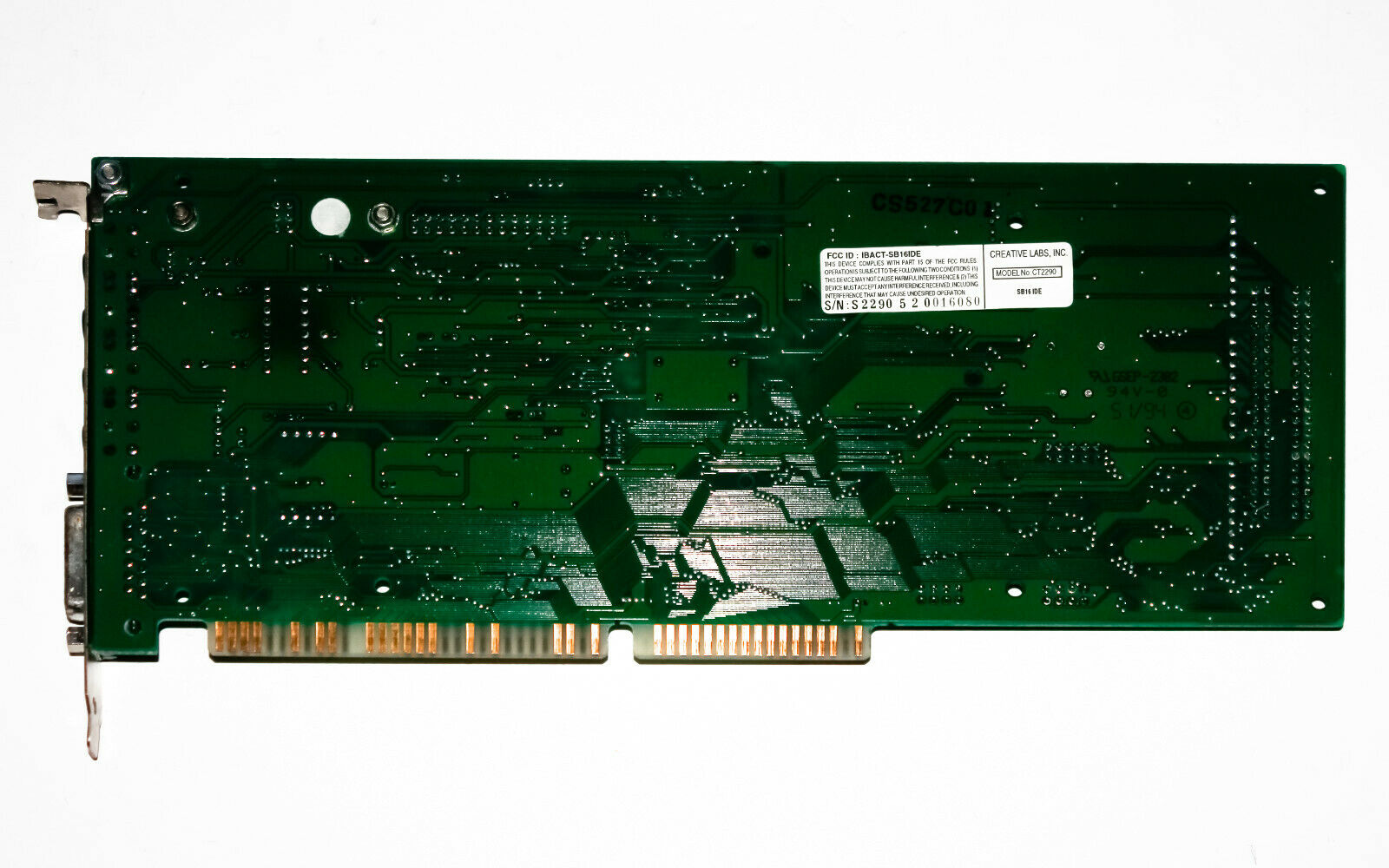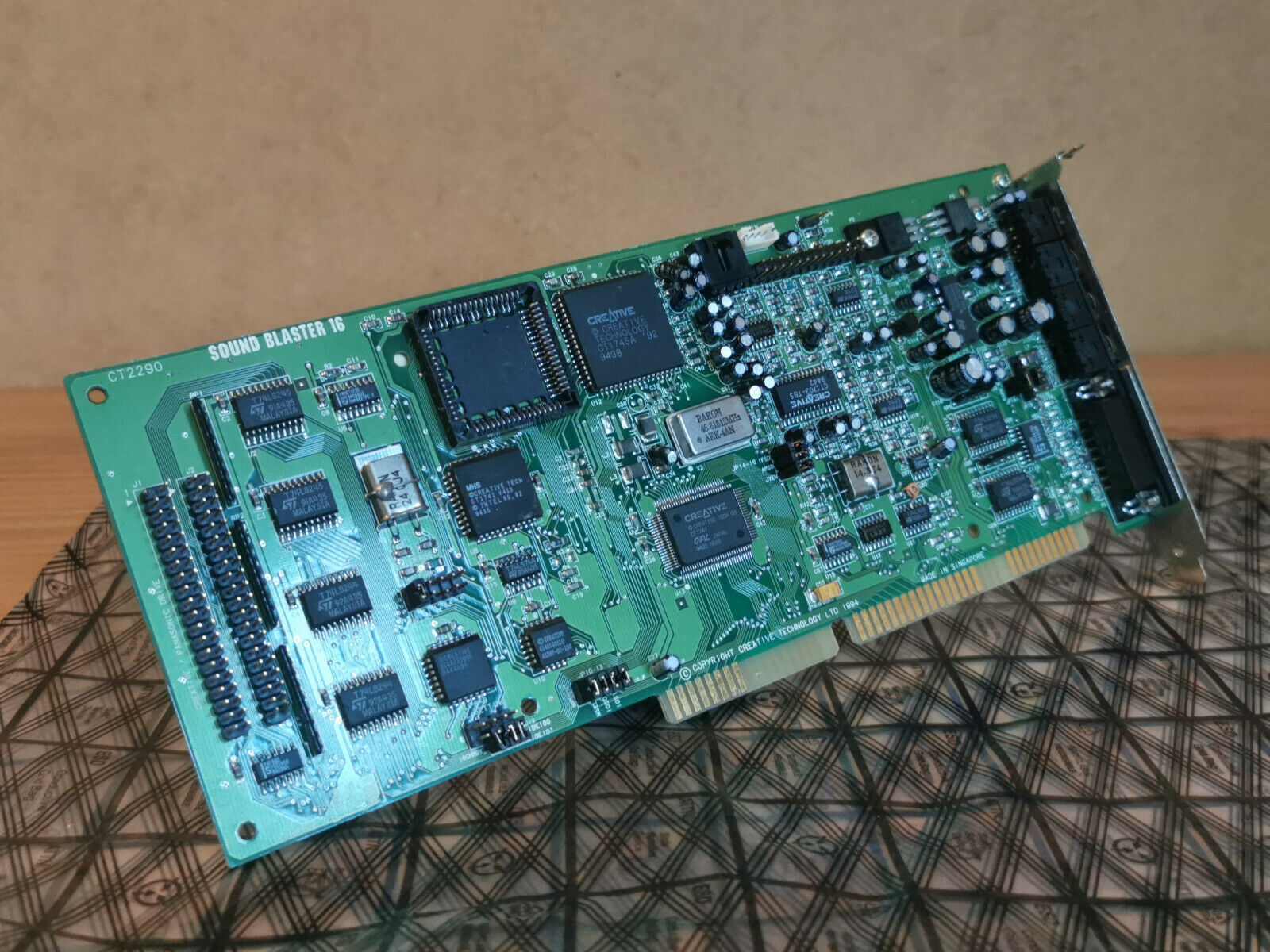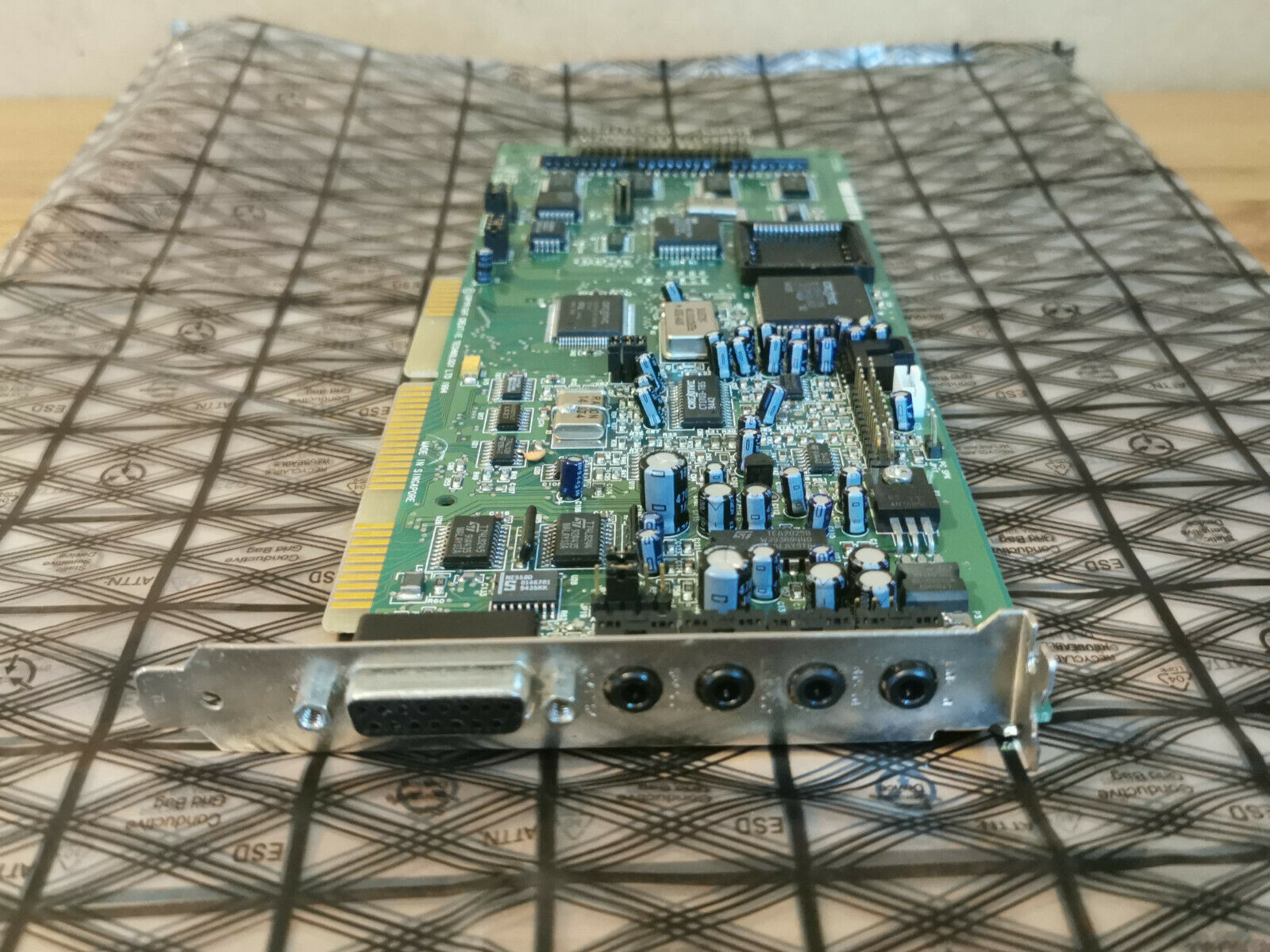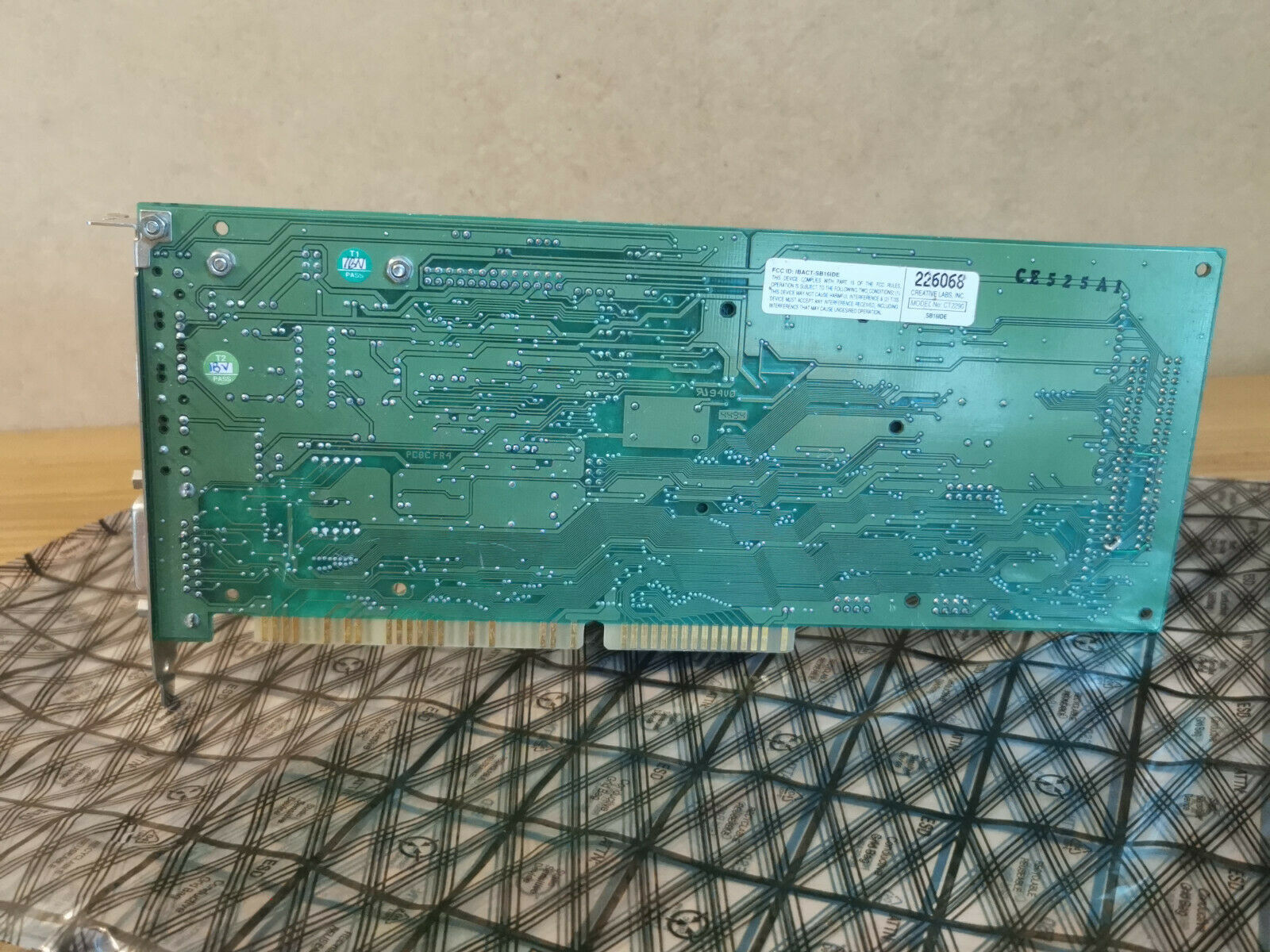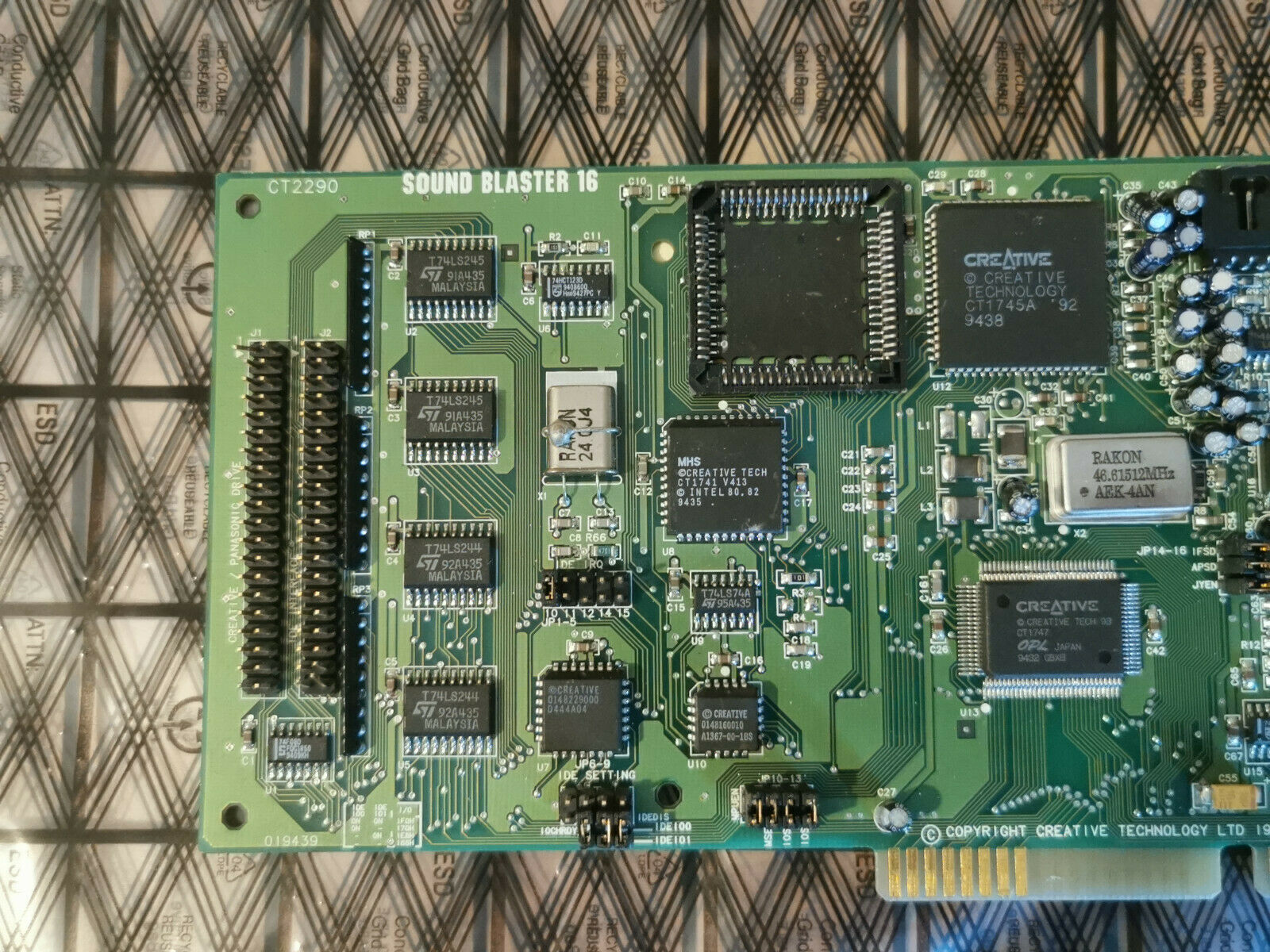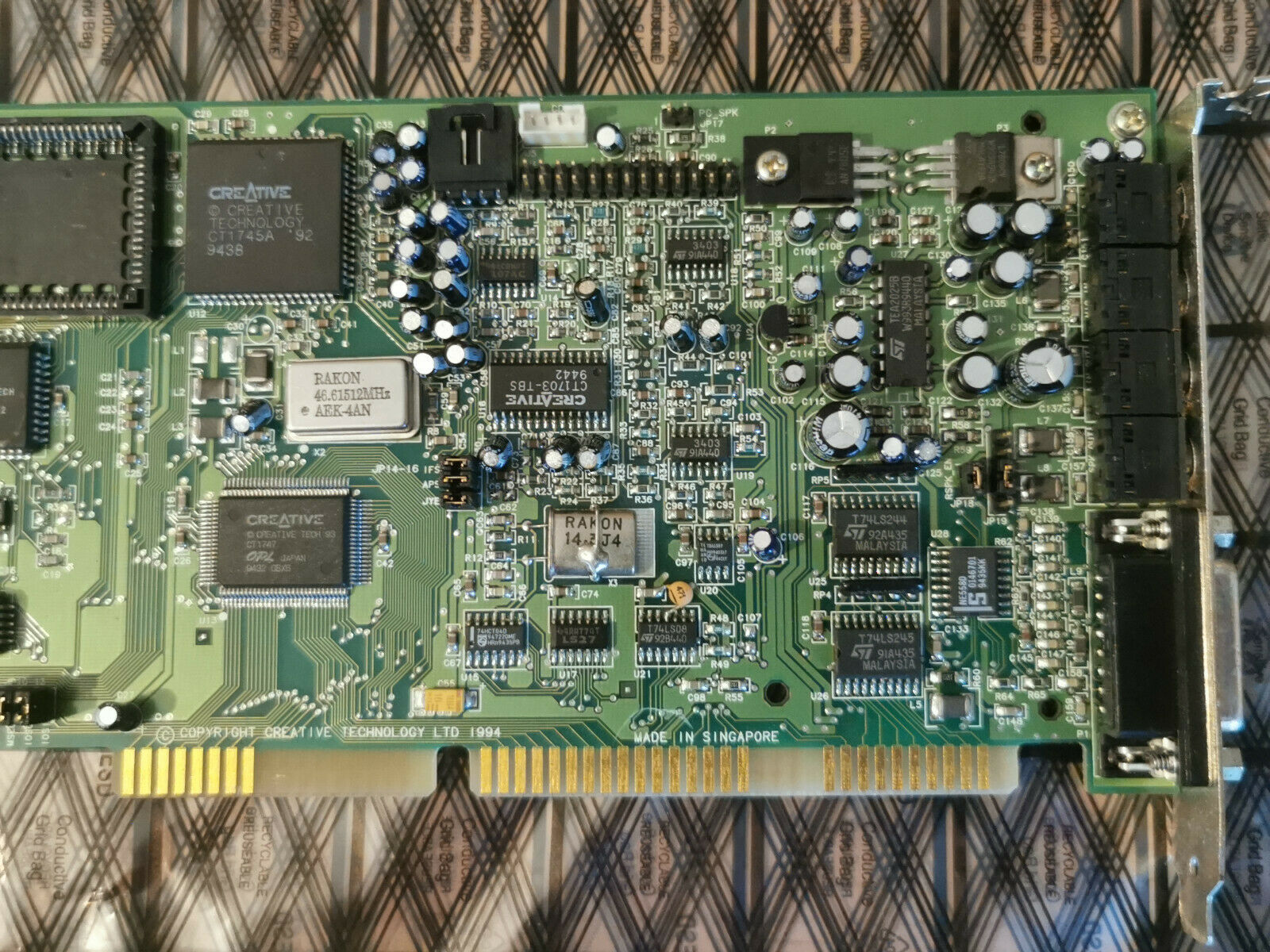Sound Blaster 16 (CT2290, CT2291, CT2299)
The CT2290 arrived just after the CT2230 to complement the second generation of Sound Blaster 16s. Essentially these were nothing more than variants of the CT2230 with different CD-ROM interfaces and the inclusion/exclusion of the ASP/CSP chip.
|
Released | 1994 |
| Bus | ISA 16-bit | |
| FM Synth | (Integrated Yamaha YMF262 in CT1747) | |
| Audio Codec | None | |
| Standards | Ad Lib, Sound Blaster, Sound Blaster Pro, Sound Blaster 16 | |
| Ports | Speaker-Out, Mic-In, Line-In, Line-Out Game/MIDI port |
|
| CD-ROM | Panasonic, IDE | |
| Wavetable | Wave Blaster header | |
| Plug & Play | No (Auto-Init only) | |
| FCC ID(s) | IBACT-SB16IDE | |
| Price | - | |
| See Also | Sound Blaster 16 (CT2770) Sound Blaster 16 (CT2230) |
The CT2290, full name Sound Blaster 16 IDE, is the same as CT2230 but with Panasonic and IDE CD-ROM interfaces, and the CSP/ASP chip soldered-in or socketed.
The CT2291 is the "Value Edition" version of the CT2290. These do not support having a CSP/ASP chip. These cards also only have an IDE connector - no 'Creative/Panasonic Drive' connector.
The CT2299 was identical to the CT2290 but was marketed without the CSP/ASP chip (though still supported this option as the socket remained).
The CT2291 and CT2299 are still branded CT2290 on the front silkscreen. A sticker on the rear of the CT2291 will indicate it is a CT2291. All share the same FCC ID.
These cards are highly-rated for producing a very clean output on the 'Grand OPL3 Comparison Run' both for FM and digital audio, though do check the Noise Issues section further up this page.
Board Revisions
Known board revisions include 19439, 29445, and 49513.
They all got the
CT1741 DSP chip with DSP v4.13 (with hanging note bug).
All board revisions also got the latest CT1745A-S mixer chip.
Competition
The Sound Blaster 16's primary enhancement over its predecessor (the Sound Blaster Pro) was its capability to playback 16-bit audio for a crisper, cleaner sound. Unfortunately, this wasn't heavily adopted by games developers who continued to use lower-quality samples. Because of this, buying a Sound Blaster 16 really didn't offer any benefit over a much cheaper 8-bit audio card unless you were into recording your own stuff. The marketing department at Creative Labs didn't care, however, and people bought Sound Blaster 16s like they were going out of fashion, thinking 16 bits were always twice as good as 8.
In 1994, there was plenty to choose from in the ISA sound card market, with a lot new cards to choose from. Gravis released the UltraSound Max which added a Crystal CS4231A-KL codec to their wavetable, finally giving the UltraSound backward-compatibility with Ad Lib, Sound Blaster and Sound Blaster Pro. Another card new this year that sported the same Crystal chip was the MediaTrix AudioTrix Pro which also came with a 2 MB onboard wavetable and the new Yamaha OPL4 chip
Lots of off-brand cards sporting other Crystal chipsets [CS4215, CS4216 and CS4248] were also out in large quantities.
ESS Technologies' introduced their second audio chipset, ES688, with five-channel mixer and 16-bit stereo recording and playback capability.
OPTi launched the successor to their 82C928 'MAD16' chipset with the 82C929A MAD16 Pro, which was essentially the same but added an MPU-401 UART and IDE CD-ROM interfaces.
New from the MediaVision camp were the Pro Sonic 16 SCSI, Pro 3D/Premium 3D, Deluxe and Deluxe 16 cards, all of which leveraged their new Jazz16 chipset. The Pro 3D and Premium 3D were the first to offer SRS Surround Sound on a sound card - something Creative Labs had not yet done.
Turtle Beach released their first 2nd-generation cards that comprised Tahiti, Rio wavetable daughterboard, and Monterey (a packaged up Tahiti and Rio combined) - all great, but didn't have the crucial backward compatibility with Ad Lib and Sound Blaster standards.
In the Media
Setting it Up
Downloads
Operation Manual Get in touch if you can provide this missing item! |
DOS and Windows 3.1 Utility Disks The original Sound Blaster 16 DOS and Windows 3.1 installation disks, marked Sound Blaster 16 |
. DOS and Windows 3.1 Utility Disks The original Sound Blaster 16/AWE DOS and Windows 3.1 installation disks, marked SDR-31STD-1-US (Revision 1). |
More Pictures

